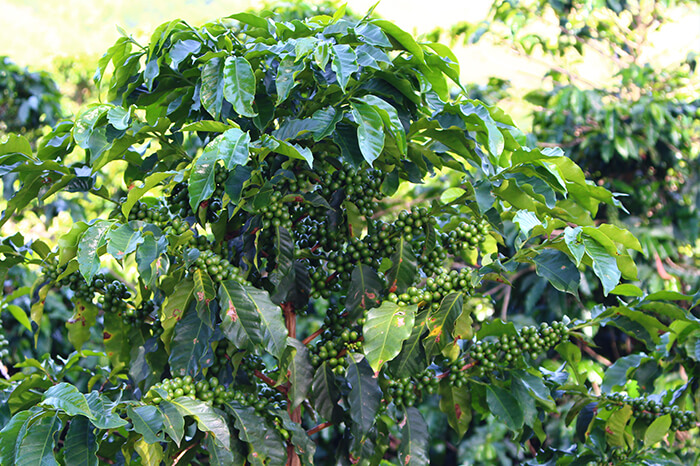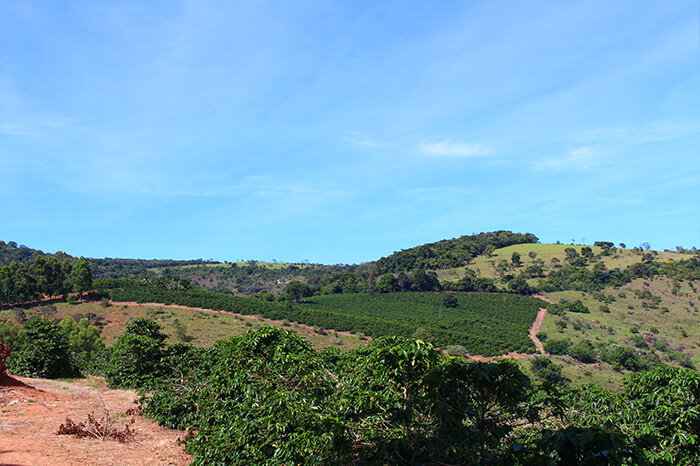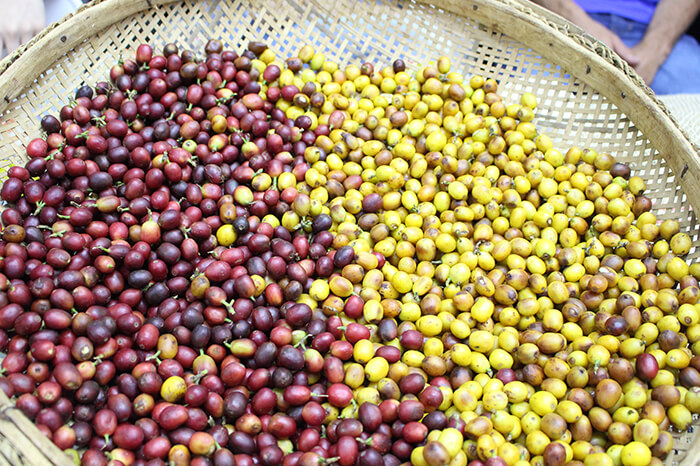"Coffee and milk" in Minas Gerais shows power of Census of Agriculture
December 26, 2017 09h00 AM | Last Updated: December 27, 2017 10h20 AM
The IBGE will visit nearly 550 thousand agricultural establishments in Minas Gerais up to February 2018. Of them, more than 368 thousand (66%) already received an enumerator of the Census of Agriculture 2017 to collect data to update the picture of the rural Brazil. Stories of dedication and love to the countryside are hidden behind the figures, awarding this state with the status of the biggest producer of coffee and cow milk in Brazil.
From 2010 to 2016, the Municipal Agricultural Production - PAM shows that the output of coffee jumped from 1.5 million to 1.8 million tonnes, and the trend remains positive. "Minas Gerais is a unique state in terms of the production of coffee. Due to its extensive area, it is possible to plant different types of coffee, in heights between 600 and 1,300 meters", explains Bernardino Guimarães, technical coordinator of coffee-growing of the Company of Technical Assistance and Rural Extension of the State of Minas Gerais - Emater.





Typical in that region, higher terrains influence the quality of the grain, since the cold weather provides a slower ripening and, as a result, a higher concentration of sugar in the fruit. It results in a locality suitable for growing the so-called special coffee, informally known as "gourmet coffee", which brings together different tastes and flavors and has a higher value added. Most products come from small family farms – 79% of all the producers in Minas Gerais, according to the last Census – that use semi-mechanized processes towards exports, conquering markets mainly in the USA, Europe and Japan.
Simone Carneiro de Morais Souza, 60 years old, was born into a family of coffee growers in the city of Varginha, south of Minas Gerais. She decided to study Zootechnics, because "she is fond of earth and animals". Eight years ago she and her family moved to Cambuquira, where they harvest nearly 500 sacks of coffee per year, including the special one, which is sold to coffee shops. Of the three siblings, only Simone remained in the business of her parents.
"I deal with coffee since I was a child. I lived in several places, but I was always involved with coffee in vacations, weekends and holidays", tells her. Her daily routine begins before 7am. While she spends the day solving ordinary problems of a rural property, Simone´s husband is in charge of trade and financial management.
Bernardino Guimarães foresees the increasing alliance between quality and compliance, a guarantee that the grain follows international environmental, labor and production standards. "Minas Gerais pioneers a compliance work through the Certifica Minas Café. Today, about 1,200 producers have been certified in the state".
The milk challenge
According to the Census of Agriculture 2006, less than half of the land in Minas Gerais (48.7%) has been inherited. However, this is the case of Cesio Rosa Pereira, 77 years old, and Maria Beatriz Teixeira Pereira, 71, who have been producing milk in the municipality of Pedro Leopoldo for 50 years, 42 kilometers far from the capital Belo Horizonte. The attachment to livestock is what keeps the 230-hectare property active, mixing with a number of other small agricultural establishments in the region.
"We are from the countryside, it gives us satisfaction rather than profit", tells Cesio, clarifying that the major source of income comes from other activities. In spite of the difficulties, the couple changed from a daily output of 400 to 1,100 liters along decades, which are transported to a local cooperative and later to a large manufacturer of milk products.
Milking is manual in the property. Corn and sorghum are also planted, serving as animal feed. Nevertheless, cropping is not the only cattle feed, which is raised in the semi-intensive system and is split into pasture and corral.
Brazil is the fourth biggest world producer of milk. Having produced 9 billion liters in 2016, Minas Gerais is the biggest state in the country, according to the Municipal Livestock Survey - PPM. The product is distributed to other states, particularly São Paulo and Rio de Janeiro.
Climate and plenty of water are favorable factors for cattle raising in this region, points out Rosângela Zoccal, researcher of the Brazilian Agricultural Research Corporation - Embrapa. The expert states that milk prices, production costs and transportation are barriers for the development. Manpower has to be trained as well, since most producers are small ones, though the biggest volume comes from large properties. "I believe that the sector will remain growing a lot. The small producers will stick to a very specific local market, and large industries will be supplied by large producers.

"Hey you"!
"There" in Minas Gerais refers to assorted distances according to those who provide the information, taking 1,911 enumerators to everywhere in that Federation Unit. The not-so-easy accesses are one of the barriers to be overcome by enumerators, who use several transportation means, mainly motorcycles. "This depends on the region, type of relief and enumerator condition. Horses are the only means in many areas and boats in islands", tells Maria Antônia Esteves, head of the IBGE state unit of Minas Gerais.
She points out that the lack of acquaintance of the enumerators with the countryside puts another challenge, since many of them come from urban areas and "absolutely ignore the lifestyle of the countryside", like quickly and safely commuting to different establishments to be enumerated. Among the solutions for potential problems, the state unit is hardly working on the field supervision, either using more experienced servants to follow them or asking the support of potential partners.
The family of Maria Marta Alves Ribeiro, 30 years old, hugged the Census of Agriculture. Even eight-month pregnant, she remained an enumerator in Águas Vermelhas, north of Minas Gerais. Her work was only interrupted well close to the birth of her baby, happened on December 19.
During pregnancy, she and her baby visited more than 50 agricultural establishments on a motorcycle piloted by her husband. In some places, her condition gathered the sympathy of residents, who offered Maria Marta a ride in their cars and in school vans of the local municipality.
Mother for the second time, she states that she liked the experience of working as an enumerator: "people watched the IBGE ad and, when I arrived with the uniform, they thought that I came from inside the television", enjoyed her. In an unexpected situation, the owner of a large farm was surprised with the visit of the enumerator and decided to come from Montes Claros – 350 kilometers away – on a helicopter to answer the questionnaire. "He said that he would bring fireworks because the IBGE had gone there".
Nonetheless, the work of enumerators has some challenges. According to Maria Marta, there are properties so steep that they only allow to go down on foot. Flexibility is also essential to deal with distrust. "Some persons are very old and got afraid when I arrived. It took some time to explain the role of the IBGE".
In the field, the enumerator took a closer look at the rural reality. "Due to drought, those who have an irrigation system harvest some, but there are those who could not harvest anything". By gathering information on the sector, the Census will subsidize surveys, investments and public policies aimed at the Brazilian agricultural production.
Text: Helena Tallmann
Artwork: Pedro Vidal
Photographs: Embrapa and Helena Tallmann


















